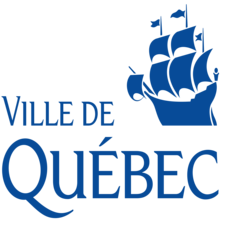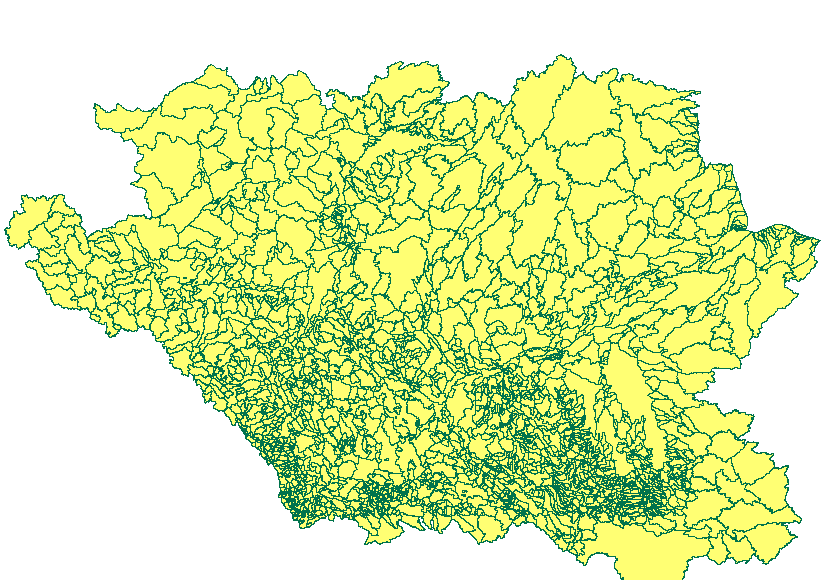Eau
Type of resources
Available actions
Keywords
Contact for the resource
Provided by
Years
Representation types
Update frequencies
status
Service types
Scale
-

The National Ecological Framework for Canada's "Land and Water Area by Province/Territory and Ecoprovince” dataset provides land and water area values by province or territory for the Ecoprovince framework polygon, in hectares. It includes codes and their English and French descriptions for a polygon’s province or territory, total area, land-only area and large water body area.
-

Mapping of linear watercourses in the territory of Quebec City.**This third party metadata element was translated using an automated translation tool (Amazon Translate).**
-

Mapping of open water courses located inside the islands of the Laval territory.**This third party metadata element was translated using an automated translation tool (Amazon Translate).**
-
Ce produit fournit les données sur les eaux de ruissellement où chaque ligne de contour correspond à une quantité annuelle moyenne d’eau de ruissellement (en millimètres). Les données sur les eaux de ruissellement ont été dérivées des valeurs de débit provenant des stations hydrométriques ayant un débit naturel. Pour des raisons liées à la qualité ou à l’accessibilité des données, les données de certaines régions du pays ne sont pas offertes pour toutes les années. Les données couvrent la période de 1971 à 2013 pour le sud et de 1971 à 2004 pour le nord. Ces fichiers ont été produits par Statistique Canada, Division de la statistique de l’environnement, de l’énergie et des transports, 2017, basés sur des données d’Environnement et Changement climatique Canada, 2015, Relevés hydrologiques du Canada, Données hydrométriques archivées (HYDAT), www.ec.gc.ca/rhc- wsc/default.asp?lang=Fr&n=4EED50F1-1 (site consulté le 3 décembre 2015); C. Spence et A. Burke, 2008, « Estimates of Canadian Arctic Archipelago runoff from observed hydrometric data », Journal of Hydrology, vol. 362, p. 247 à 259. Pour en savoir plus sur la méthodologie, les résultats et les limites, veuillez consulter l’annexe D dans le document Statistique Canada, 2017, « L’eau douce au Canada, » L’activité humaine et l’environnement, Catalogue no 16-201-X. L’objet de l’ensemble de données est de présenter sur une carte nationale à l’échelle du 1 : 32 000 000 les quantités d’eau de ruissellement dérivées du modèle du rendement de l’eau de Statistique Canada. Ce produit est conçu pour être utilisé à des fins de référence ou de cartographie. Sa couverture est délimitée par les littoraux canadiens, tels qu’ils sont définis par les limites des régions de drainage fournies dans la carte 1.1 Régions de drainage du Canada. Le produit ne couvre pas les îles de l’Arctique. Il incombe aux utilisateurs de vérifier que le produit convient à l’utilisation prévue.
-
Ce produit fournit les données sur les eaux de ruissellement où chaque ligne de contour correspond à une quantité annuelle moyenne d’eau de ruissellement (en millimètres). Les données sur les eaux de ruissellement ont été dérivées des valeurs de débit provenant des stations hydrométriques ayant un débit naturel. Pour des raisons liées à la qualité ou à l’accessibilité des données, les données de certaines régions du pays ne sont pas offertes pour toutes les années. Les données couvrent la période de 1971 à 2013 pour le sud et de 1971 à 2004 pour le nord. Ces fichiers ont été produits par Statistique Canada, Division de la statistique de l’environnement, de l’énergie et des transports, 2017, basés sur des données d’Environnement et Changement climatique Canada, 2015, Relevés hydrologiques du Canada, Données hydrométriques archivées (HYDAT), www.ec.gc.ca/rhc- wsc/default.asp?lang=Fr&n=4EED50F1-1 (site consulté le 3 décembre 2015); C. Spence et A. Burke, 2008, « Estimates of Canadian Arctic Archipelago runoff from observed hydrometric data », Journal of Hydrology, vol. 362, p. 247 à 259. Pour en savoir plus sur la méthodologie, les résultats et les limites, veuillez consulter l’annexe D dans le document Statistique Canada, 2017, « L’eau douce au Canada, » L’activité humaine et l’environnement, Catalogue no 16-201-X. L’objet de l’ensemble de données est de présenter sur une carte nationale à l’échelle du 1 : 32 000 000 les quantités d’eau de ruissellement dérivées du modèle du rendement de l’eau de Statistique Canada. Ce produit est conçu pour être utilisé à des fins de référence ou de cartographie. Sa couverture est délimitée par les littoraux canadiens, tels qu’ils sont définis par les limites des régions de drainage fournies dans la carte 1.1 Régions de drainage du Canada. Le produit ne couvre pas les îles de l’Arctique. Il incombe aux utilisateurs de vérifier que le produit convient à l’utilisation prévue.
-

The "Total Gross Drainage Areas of the AAFC Watersheds Project - 2013" dataset is a geospatial data layer containing polygon features representing the maximum area that could contribute surface runoff (total gross drainage areas) for each gauging station of the Agriculture and Agri-Food Canada (AAFC) Watersheds Project. These polygons overlap as upstream land surfaces form part of multiple downstream gauging stations’ total gross drainage areas. Drainage area includes all land whose surface runoff contributes to the same drainage outlet or gauging station. Many gauging stations share the same headwaters, thus the overlapping areas (or polygons). The majority of the drainage areas in this dataset have shared areas.
-

The "Total Effective Drainage Areas of the AAFC Watersheds Project – 2013” dataset is a geospatial data layer containing polygon features representing the areas within the “total gross drainage areas” of each hydrometric gauging station of the Agriculture and Agri-Food Canada (AAFC) Watersheds Project that would contribute to average runoff. A ‘total gross drainage area’ is the maximum area that could contribute runoff for a single gauging station – the ‘total effective drainage areas’ are those parts of that ‘total gross drainage area’ that would contribute surface runoff to an average runoff. For each “total gross drainage area” there can be only one “total effective drainage areas”. These polygons may overlap with those from other gauging stations’ “total gross drainage area”, as upstream land surfaces form part of multiple downstream gauging stations’ “total gross drainage areas”.
-

The mapping of flow beds during periods of low water or in a retention basin in the City of Laval can only be used for information purposes. Any drainage bed present on a site must be analyzed, as part of an environmental study carried out by the applicant for a permit or authorization certificate, in order to confirm whether it is a ditch or a watercourse. The map can be modified at any time by the City of Laval to reflect the most up-to-date data it has.**This third party metadata element was translated using an automated translation tool (Amazon Translate).**
-

The "Effective Drainage Area of the AAFC Watersheds Project - 2013" dataset is a geospatial data layer containing polygon features representing the areas of the Agriculture and Agri-Food Canada's (AAFC) Watersheds Project that could, for the entire project areas, be expected to contribute to surface runoff under average runoff conditions.
-

The “Incremental Gross Drainage Areas of the AAFC Watersheds Project - 2013” dataset is a geospatial data layer containing polygon features representing the incremental gross drainage areas of the Agriculture and Agri-Food Canada (AAFC) Watersheds Project. The Project area is subdivided by hydrometric gauging station. The maximum area that could contribute runoff to each station, less that of its upstream neighbour(s) is called an ‘incremental gross drainage area’.
 Arctic SDI catalogue
Arctic SDI catalogue